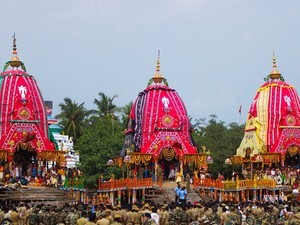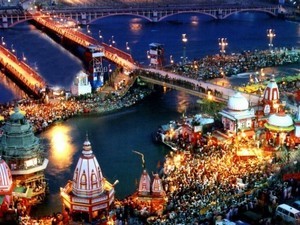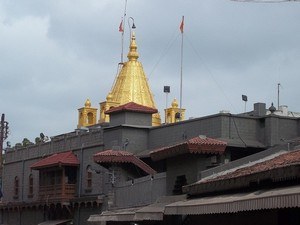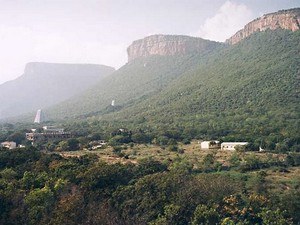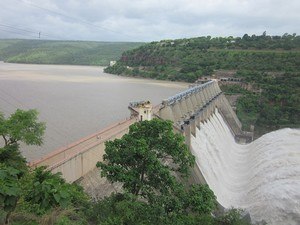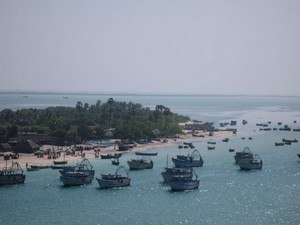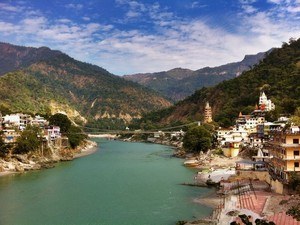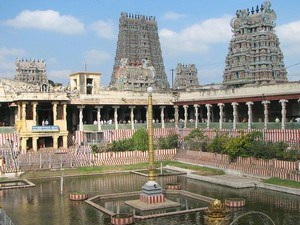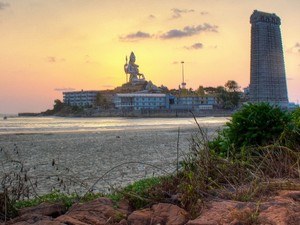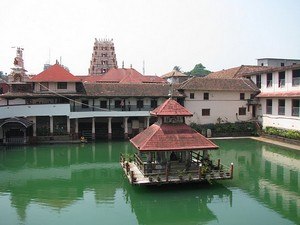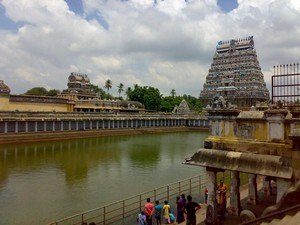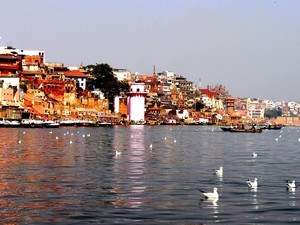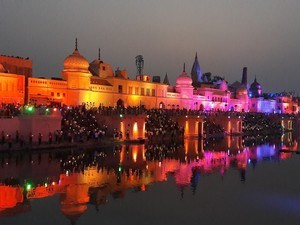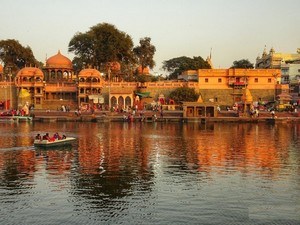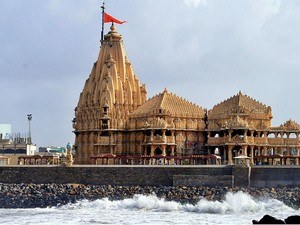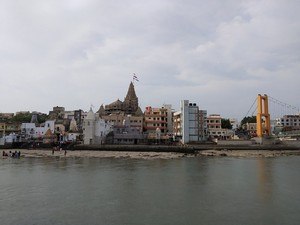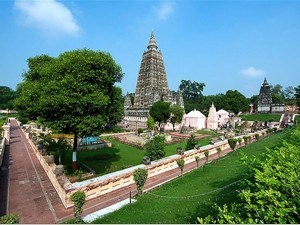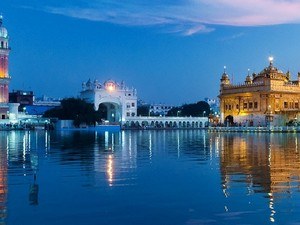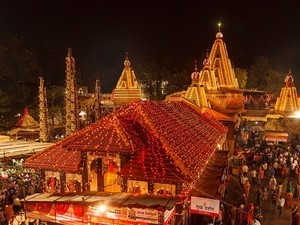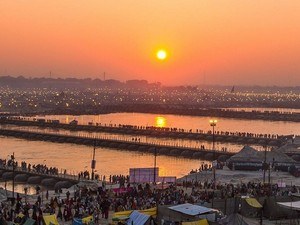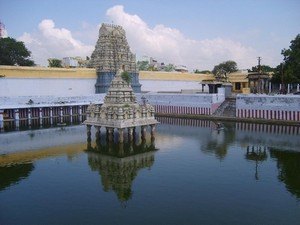1
DAY 1 : RAM KUND - KALARAM MANDIR – SITA GUFA
DAY 1 : RAM KUND - KALARAM MANDIR – SITA GUFA
 Travel from to
Travel from to
 Sightseeing
Sightseeing
Leisure / No Sightseeing
At a distance of 2 km from Nashik Central Bus Station, Ramkund is the most important sacred bathing tank in the Panchavati area of Nashik City. This is one of the popular places to visit in Nashik during Kumbh Mela.
Ram Kund, measuring 27 x 12 sq. m was built by Chitrarao Khatarkar in 1696 AD. According to the legend, this sacred bathing tank on the bank of river Godavari is believed to be the spot where Lord Rama had taken his bath during their exile. It is also said that Lord Rama has performed his father's funeral rites in this Kund and hence Ram Kund is also known as Asthi Vilaya Tirtha (Bone Immersion Tank). This is one of the must-visit places as part
of Nashik tour packages.
Ram Kund is a holy place for Hindus. Devotees believe that a dip in this tank will fulfill their wishes and also free them from their sins. There is a popular belief .....
 Duration of visit: 30 Mins
Duration of visit: 30 Mins
 Timings: 24 Hours
Timings: 24 Hours
At a distance of 2.5 km from Nashik Central Bus Station, Sri Kalaram Temple is an old Hindu shrine situated in the Panchavati area of Nashik city in Maharashtra. It is probably the most important temple in Nasik, and among the must include places in Nashik tour packages.
Kalaram Temple is dedicated to Lord Rama, who has been enshrined inside the sanctum sanctorum in the form of a black stone idol. It is one of the important places to visit in Nashik. The temple was built by Sardar Rangarao Odhekar in 1790 AD. It was said that Odhekar had a dream that the statue of Rama in black color was in the Godavari River. Odhekar took the statue from the river and built the temple. The temple formed a pivotal role in the Dalit Movement in India. Dr. Ambedkar led a protest outside the temple on 2nd March 1930, to allowing Dalits into the temple.
The architectural .....
 Duration of visit: 30 Mins
Duration of visit: 30 Mins
 Timings: 6 AM - 12 PM & 5 PM - 8 PM
Timings: 6 AM - 12 PM & 5 PM - 8 PM
At a distance of 2.7 km from Nashik Central Bus Station, Sita Gumpha or Sita Gufaa is situated near Kalaram Temple in Panchavati area of Nashik. It is one of the top pilgrimage places to visit in Nashik.
Sita Gumpha is believed to be the place where Sita worshipped Lord Shiva during their exile. The cave, containing the idols of Lord Ram, Sita and Lakshmana, can be accessible only through the help of a narrow staircase. The ancient Shivlinga still exists in the cave and is visited by large number of devotees every day. Devotees believed to be the place where Ravana, the demon king of Lanka, abducted Sita.
Outside the cave is a large grove of 5 very old Banyan trees, after which the area is named, Panchavati means 'a garden of five banyan trees'. These trees are said to have been there during the exile of Lord Rama. There is a place called Tapovan where Lakshmana, the brother of Rama, cut off the nose of Surpanakha, the sister of Ravana. The entire Aranya Kanda of Ramayana is .....
 Duration of visit: 15 Mins
Duration of visit: 15 Mins
 Timings: 6 AM - 9 PM
Timings: 6 AM - 9 PM
At a distance of 8 km from Nashik Central Bus Station, Pandavleni Caves or Trirashmi Caves are the ancient rock cut caves situated on Trirashmi Hills to the south of Nashik. The location of the caves is a holy Buddhist site in Maharashtra and also one of the popular places to visit in Nashik.
Pandavleni Caves are a group of 24 caves carved between the 3rd century BC and the 2nd century AD, representing the Hinayana Buddhism and has nothing to do with the characters of Mahabharata (the Pandavas).These caves were built by the rulers of that time like Satavahanas and Kshaharatas for Hinayana Buddhist monks. More ancient name of caves is Trirashmi Caves where the root 'Trirashmi' means 'triple royal'.
Most of the caves are Viharas except for the 18th cave which is a Chaitya. Caves 3, 10, 18 and 20 are the most significant and fascinating caves among the 24 caves which are noted for their magnificent sculptures. Cave 3 has a large Vihara with fascinating sculptures. Cave 10 is also .....
 Duration of visit: 2 Hours
Duration of visit: 2 Hours
 Timings: 8 AM - 6 PM
Timings: 8 AM - 6 PM
At a distance of 15 km from Nashik Central Bus Station, Sri Dharmachakra Prabhav Tirth is a beautiful Jain Temple situated near Viholi village on Nashik - Mumbai Road. This is one of the top Nashik tourist places and also one of the popular pilgrimage places in Nashik.
Sri Dharmachakra Prabhav Tirth was established under the divine inspiration of Acharya Sri Jag Vallabh Surishwaraji Maharaj Saheb. This recently built temple is popularly called as Jain Mandir. This is a three-storey structure whose architecture is unlike the other Jain temples has completely new and contemporary outlook. The temple is built using the pink sand stones and white marbles which beautifies the feel and the look of the temple.
The three storey temple consists of a Pravachan Hall on ground floor where meditations and sermons take place, Choumukhji on the first floor and Ashtapadji on the third floor. A statue of Sri Mantradhiraj Parshwanath Bhagwan is the main idol (mulnayak) of the temple. The temple .....
 Duration of visit: 30 Mins - 1 Hr
Duration of visit: 30 Mins - 1 Hr
 Timings: 5 AM - 6 PM
Timings: 5 AM - 6 PM
At a distance of 9 km from Nashik Central Bus Station, Muktidham is a marble temple complex located at Deolali Gaon on the suburbs of Nashik. It is one of the popular tourist attractions in the city of Nashik.
Muktidham Temple complex was built by Late Sri JayramBhai Bytco in 1971. An abode of most of the gods and goddesses of the Hindu religion, this splendid shrine displays the replica of all the 12 Jyotirlingas of India. It is believed that a holy darshan of this shrine provides as much virtue as a visit to four holy places, which makes this magnificent shrine a crowded pilgrim center.
It is a magnificent piece of architecture, made with white marble from Makran in Rajasthan. There is a temple dedicated to Lord Krishna in the Muktidham complex. The walls of Krishna temple have paintings depicting scenes from life of Krishna and Mahabharata. These were painted by a noted painter Raghubir Mulgaonkar. Unique to this temple are eighteen chapters of Bhagavad-Gita written on the .....
 Duration of visit: 30 Mins
Duration of visit: 30 Mins
 Timings: 6 AM to 7 PM
Timings: 6 AM to 7 PM
%%Itinerary_Title_Day2%%
At a distance of 22 km from Trimbakeshwar and 45 km from Nashik, Harihar Fort or Harihargad is a small hill fort in Upper Vaitarana range near Trimbak in Nashik district of Maharashtra. Also known as Harshgad or Harishgad, the fort is one of the popular monsoon trekking places near Nashik.
Harish Fort was one of the forts in the possession of the Ahmadnagar Sultans. It was visited by Captain Briggs in 1818 AD. In 1636 CE, Harishgad, Trimbakgad, Tringalwadi and few other forts were given by Shahaji to the Mughals. Harishgad was one of the 17 strong places that surrendered to the British on the fall of Trimbak in 1818 CE.
Situated at an altitude of 1120 m (3676 feet), Harihargad lies on a triangular rock with all the three sides vertical and is approachable only from one side i.e. through 200 feet high rock cut staircase. The most fascinating aspect about this trek is the rock cut steps at an angle of 80 degrees that one has to negotiate to enter the fort. Though it is a vertical .....
 Duration of visit: 3-4 Hours
Duration of visit: 3-4 Hours
 Timings: 6 AM to 5 PM
Timings: 6 AM to 5 PM
At a distance of 28 km from Nashik, Trimbakeshwar or Tryambakeswar is a small pilgrimage town located on the banks of River Godavari at the foothills of Brahmagiri Mountains in Nasik district of Maharashtra. It is one of the popular places of pilgrimage in Maharashtra, and among the must-include places in Nashik packages.
Trimbakeshwar is famous for Trimbakeshwar Temple which is one of the 12 Jyotirlinga temples of Lord Shiva. It is one of the most famous places to visit near Nashik. Trimbakeshwar Temple is built by Sri Nana Saheb Peshwa in 1755-1786 AD. The presiding deity of the temple is Lord Shiva as Trimbakeshwar. The extraordinary feature of the Jyotirlinga located here is its three faces embodying Lord Brahma, Lord Vishnu, and Lord Rudra. A crown studded with precious stones rests on top of .....
 Duration of visit: 2 Hours
Duration of visit: 2 Hours
 Timings: 5.30 AM - 9 PM
Timings: 5.30 AM - 9 PM
End
 Travel from to
Travel from to
 Travel from to
Travel from to
END OF THE TOUR

